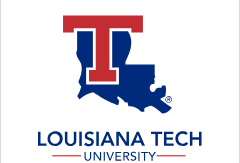Document Type
Poster Presentation
Loading...
Location
Online
Description
Multiple variables influence amphibian activity, such as weather, time of year and day, sound, and light (artificial or natural). Previous studies have found that light can impact frog calling behavior, and species vary in their responses to light levels. Because call surveys are useful in determining whether a site is occupied by a species, it is important to determine what factors affect calling activity. In this study, we determined how light and the other previously mentioned variables affect calling activity of two species of frog (Spring Peepers and Cajun Chorus Frogs). We conducted nighttime frog call surveys between January and May 2019 in 14 different areas in northern Louisiana. We recorded data on vocalizing species, weather, noise, and light. We then created occupancy models for each species in R to determine which factors best predict frog calling activity. The null model was the best model for Spring Peepers; they call in almost all conditions. For Cajun Chorus Frogs, the noise model was the best model, but none of the parameters were significant. Although we predicted light would have a greater impact on frog calling activity than other variables, it was not an effective predictor of calling activity. For future investigations, we recommend focusing on the relationship between noise level and calling activity of Cajun Chorus Frogs. We plan to repeat these analyses for other frog species.
Recommended Citation
Franklin, Peyton; Earl, Julia; Shepard, Donald; and Maness, Terri, "13. What Environmental Factors Affect Calling Activity of Frogs in Northern Louisiana?" (2021). Undergraduate Research Symposium. 16.
https://digitalcommons.latech.edu/undergraduate-research-symposium/2021/poster-presentations/16
PeytonFranklin_ResearchSymposiumPoster-3-JEE_DBS.pptx (10109 kB)
Poster - Peyton Franklin.pdf (816 kB)
13. What Environmental Factors Affect Calling Activity of Frogs in Northern Louisiana?
Online
Multiple variables influence amphibian activity, such as weather, time of year and day, sound, and light (artificial or natural). Previous studies have found that light can impact frog calling behavior, and species vary in their responses to light levels. Because call surveys are useful in determining whether a site is occupied by a species, it is important to determine what factors affect calling activity. In this study, we determined how light and the other previously mentioned variables affect calling activity of two species of frog (Spring Peepers and Cajun Chorus Frogs). We conducted nighttime frog call surveys between January and May 2019 in 14 different areas in northern Louisiana. We recorded data on vocalizing species, weather, noise, and light. We then created occupancy models for each species in R to determine which factors best predict frog calling activity. The null model was the best model for Spring Peepers; they call in almost all conditions. For Cajun Chorus Frogs, the noise model was the best model, but none of the parameters were significant. Although we predicted light would have a greater impact on frog calling activity than other variables, it was not an effective predictor of calling activity. For future investigations, we recommend focusing on the relationship between noise level and calling activity of Cajun Chorus Frogs. We plan to repeat these analyses for other frog species.

